#but 'court eunuch' generally refers to chinese history
Explore tagged Tumblr posts
Text
this could not be further from court eunuch behavior. i dont think you guys actually read Chinese Eunuchs: Structure of Intimate Politics (tatsuki mitamura) or Inside the World of the Eunuch: A Social History of the Emperor’s Servants in Qing China (melissa s dale)

#of course i have no way of knowing if this is accurate to byzantine eunuchs#but 'court eunuch' generally refers to chinese history
21K notes
·
View notes
Text
[Ming Dynasty]Chinese Armor:Life of female general 秦良玉/Qin Liangyu
The only female general recognized by the Chinese Orthodox Histories,The Twenty-Four Histories (Chinese: 二十四史)
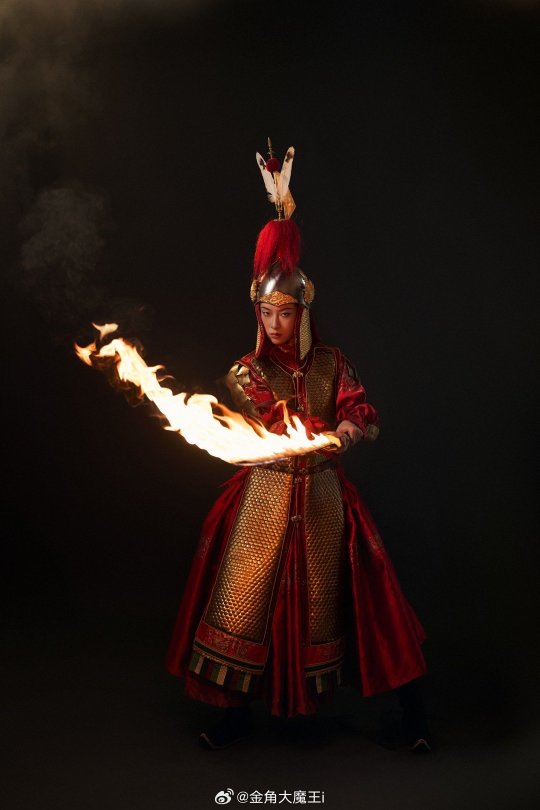
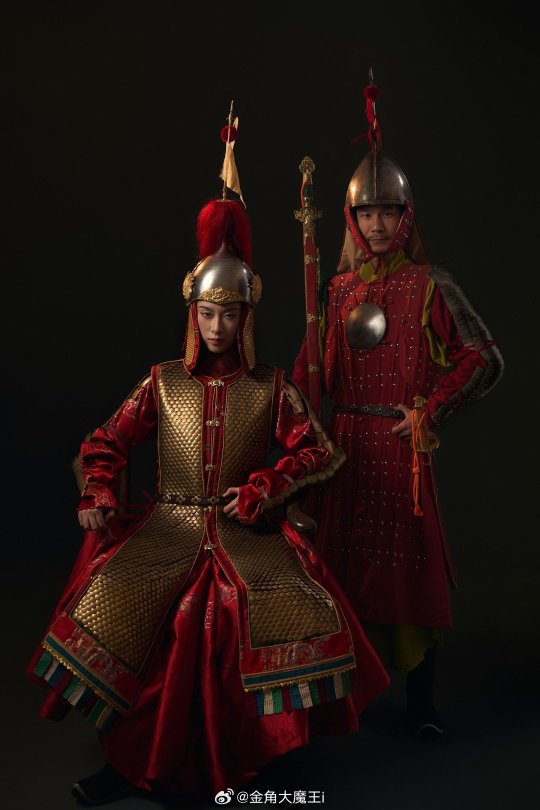

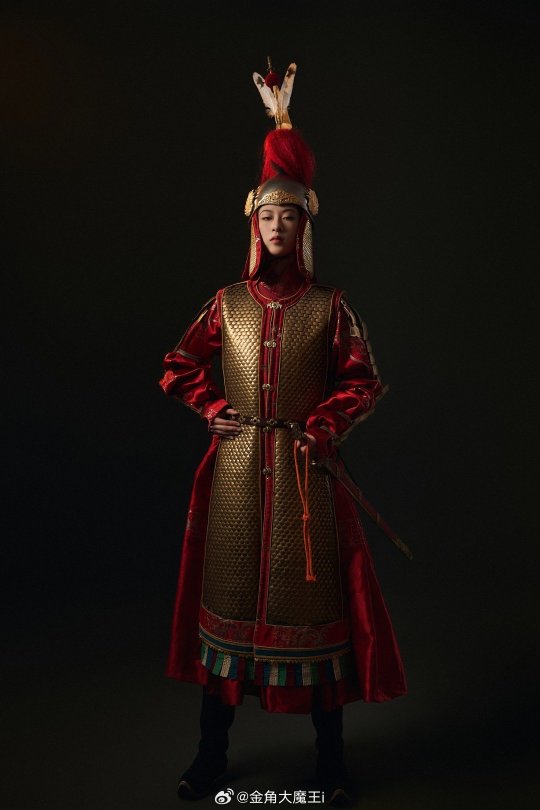
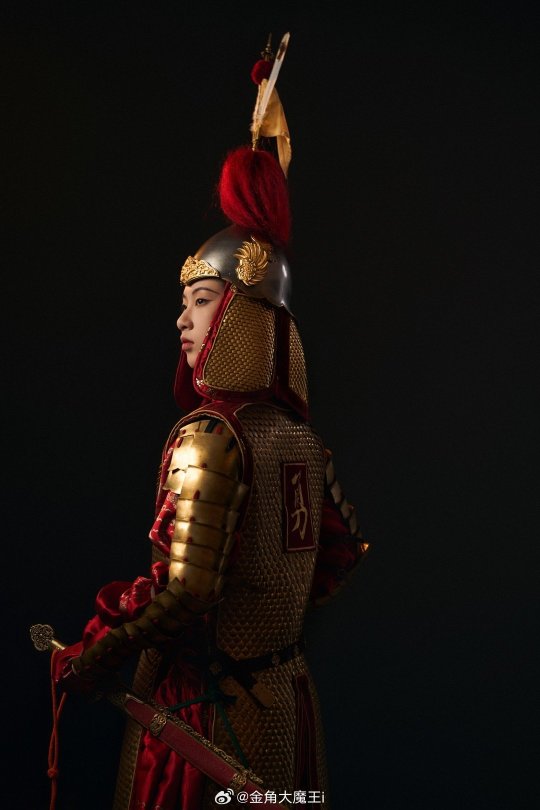
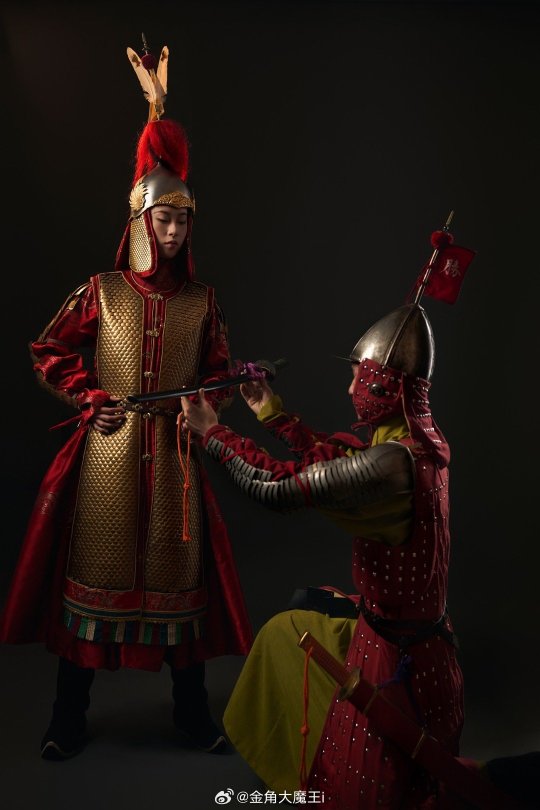
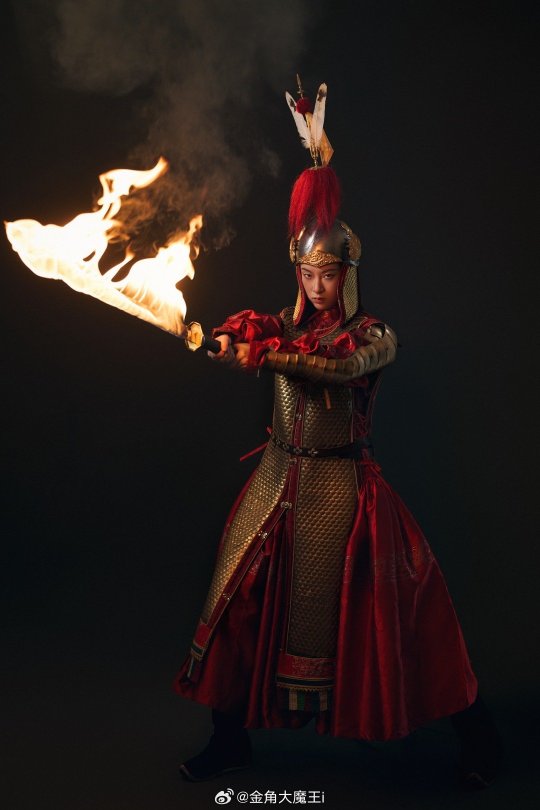
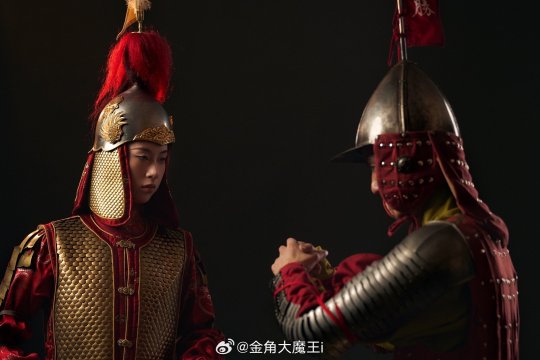

【Historical Artifact Reference】:
China Ming Dynasty Royal Painting:《出警图/Departure Herald》
In this handscroll is a great imperial procession making its way to pay respects at the imperial tombs. Departing from the Te-sheng (Victory) Gate of the Peking city wall, the artists here depicted shops along the way and the appearance of ceremonial guards to the final destination of the imperial tombs, the final resting place for Ming dynasty emperors 45 kilometers from the capital at Mt. T'ien-shou. Departure Herald is actually accompanied by another long handscroll painting entitled Return Clearing. That work depicts the process of the tomb sweeping and inspection tour. Usually considered as a pair, they are collectively known as Departure Herald and Return Clearing.
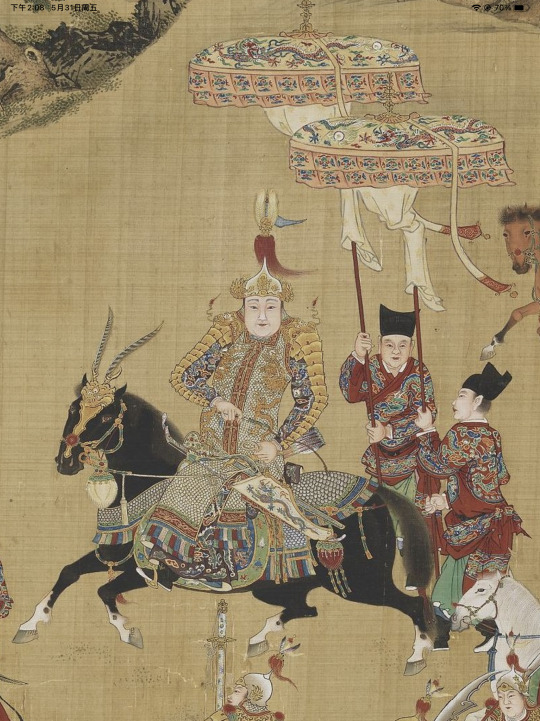
↑Emperor Wanli of the Ming Dynasty of China, Zhu Yijun, wearing armor
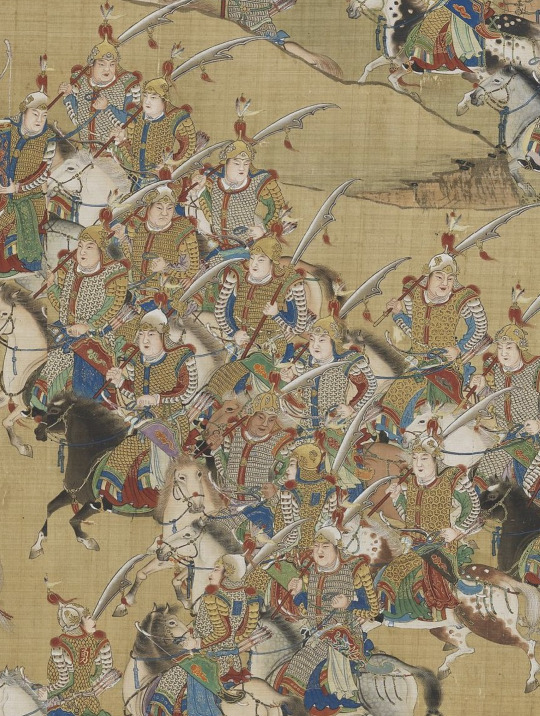
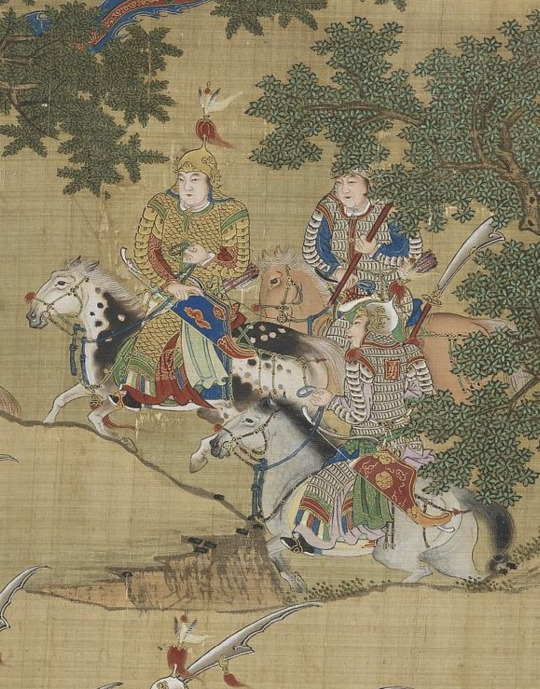
The emperor's guards and ceremonial guards, a good depiction of Ming dynasty armor
【秦良玉/Qin Liangyu:The only female general recognized by the Chinese emperor and official history】
Qin Liangyu (1574–1648), courtesy name Zhensu, was a female general best known for defending the Ming dynasty from attacks by the Manchu-led Later Jin dynasty in the 17th century.
Early life and education
Qin Liangyu was born in Zhongzhou (忠州), which is in present-day Zhong County, Chongqing.Her father, Qin Kui (秦葵), obtained the position of a gongsheng (貢生) in the civil service examination. He believed that girls should receive the same education as boys, so he made Qin Liangyu study history and the Confucian classics with her brothers. He also taught them martial arts. Qin Liangyu learnt martial arts more deeply than her brothers and became proficient in archery and horse-riding. She was also known for her skill in poetry.
Marriage to Ma Qiancheng
In 1595, Qin Liangyu married Ma Qiancheng (馬千乘), the tusi and xuanfushi (宣撫使; "Announcing and Pacifying Commissioner") of Shizhu County, and accompanied him in minor battles against local warlords in the southwestern border of the Ming Empire. They had a good marriage and he often sought her advice.In 1599, when Yang Yinglong (楊應龍) started a rebellion in Bozhou (播州; present-day Zunyi, Guizhou), Ma Qiancheng brought 3,000 riders with him to suppress the revolt while Qin Liangyu brought an additional 500 to support her husband. They successfully quelled the rebellion and destroyed the rebels' camps.
In 1613, Ma Qiancheng offended Qiu Chengyun (邱乘雲), an influential court eunuch, and ended up being arrested and imprisoned. He died in prison later. Qin Liangyu succeeded her husband as the xuanfushi of Shizu County. Those under her command were known as the White Cavalry (白杆兵).
Resisting rebel forces in Sichuan
In 1620, Qin Liangyu's elder brother, Qin Bangping (秦邦屏), led 3,000 White Cavalry to Liaodong to resist invaders from the Manchu-led Later Jin dynasty. He was killed in action at the Battle of Hun River (渾河之戰).
In 1623, Qin Liangyu assisted Ming forces in suppressing the She-An Rebellion in Sichuan and Guizhou led by She Chongming (奢崇明) and An Bangyan (安邦彥). In the following year, her elder brother, Qin Minping (秦民屏), was killed in battle by An Bangyan's forces.
In 1630, when Later Jin forces besieged the Ming capital, Beijing, Qin Liangyu led forces from Sichuan to reinforce the capital. The Chongzhen Emperor showered her with praises in poetry and presented her with four poems as she passed through Beijing. In 1634, when Zhang Xianzhong's rebel army invaded Sichuan, Qin Liangyu and her son, Ma Xianglin (馬祥麟), led their troops to attack the rebels, defeated them at Kuizhou (夔州; present-day Fengjie County, Chongqing) and drove them away. In 1640, Qin Liangyu defeated another rebel force led by Luo Rucai (羅汝才) in Kuizhou and Wushan. In recognition of her contributions to the Ming Empire, the Chongzhen Emperor appointed her as the Crown Prince's Guardian (太子太保) and awarded her the title "Marquis Zhongzhen" (忠貞侯; lit. "Loyal and Chaste Marquis").
Later life and death
The Ming Empire was overthrown in 1644 by rebel forces led by Li Zicheng, and its former territories were conquered by the Later Jin dynasty (later renamed to Qing dynasty). Some Ming loyalists formed a remnant state, the Southern Ming dynasty, in southern China to resist the Qing dynasty. Its nominal ruler, the Longwu Emperor, also granted Qin Liangyu a marquis title. Meanwhile, Zhang Xianzhong invaded Sichuan again, and Qin Liangyu attempted to resist him, but was defeated and forced to retreat, allowing Zhang to conquer most of Sichuan. She did however prevent her soldiers from surrendering to Zhang.
Qin Liangyu controlled part of Shizhu County and her policy of agricultural self-sufficiency made her region attractive for refugees. She helped about 100,000 refugees to settle down in Shizhu.
Qin Liangyu died in 1648 and was buried in present-day Yachun Village, Dahe District, Shizhu County, Chongqing. She was given the posthumous name "Zhongzhen" (忠貞; lit. "Loyal and Chaste") and was survived by her son, Ma Xianglin (馬祥麟).
Legacy
Qin Liangyu's life, along with her weapons and armour, is showcased in a museum in Shizhu County, Chongqing. A statue of her is in the Ganyu Hall of the Shibaozhai in Zhong County (that was preserved during the Three Gorges Project).Together with Hua Mulan, Liang Hongyu and He Yufeng, Qin Liangyu is one of the most well-known female warriors and heroines in China.
In the Twenty-Four Histories, Qin Liangyu was also the only woman whose biography was listed among the biographies of court officials and generals.
________________
📸Photo & Model :@金角大魔王i & @爱穿汉服的曠先生
🔗Weibo:https://weibo.com/1763668330/O3aKR4CSv
________________
#chinese hanfu#Chinese Armor#Female General#秦良玉/Qin Liangyu#hanfu#hanfu accessories#hanfu_challenge#chinese traditional clothing#china#chinese#chinese history#china history#漢服#汉服#中華風#金角大魔王i
364 notes
·
View notes
Text
Ailing Empire: Adrestia and the Han
tl;dr: The Adrestian Empire in FE3H is a direct reference to the rise and fall of the Han Dynasty (202 BC - 220 CE).
This is the first of a few rambles I'd like to do about Chinese history, specifically on the late Han - Three Kingdoms period which influenced KOEI's writing for FE3H. For these I'll be focusing more on themes and inspirations, and less on 1-to-1 comparisons of events and characters. But I'll make it clear what the history is, what the FE3H references are, and why an educated Chinese or Japanese audience would recognize them.
Also fights about who's right or wrong will be ignored. okay lessgo
First, The History
The Han Dynasty, starting around ~202 BC, is the first major imperial dynasty of China. It's the first Chinese empire that lasted for more than 25 years, it's considered the origin of Chinese identity, and even the modern Chinese writing system (hanzi) and the term for ethnic Chinese people (the Han) still reference it. It's very influential. Unfortunately, it also collapsed spectacularly in the 200s CE, leading to a period of civil war in which 3 kingdoms with complex leaders and heroes fought over whose vision should govern China. You can see where I'm going with this.
Now, China isn't new to civil war either before or after the Three Kingdoms (3K). There are plenty of other famous periods of war. But the 3K became famous across Asia, not just China, for a few reasons.
Unique and memorable factions, popularly retold stories of loyalty and betrayals, and people not agreeing on who was in the right (again, you can see where I'm going with this).
Historical records (the Records of the Three Kingdoms, or 三国志) were written about 50 years after the period, providing historians and readers plenty of reference material.
Another 300 years of civil war happening AFTER the 3K made everyone miss the Han and look back fondly at the events near its end.
The Romance of the Three Kingdoms (三国演义), a historical novel written by Luo Guanzhong in the 1400s CE (1200 years after the Han ended), laid out the most famous events of the period in a more readable and adaptable form.
Infinite subsequent adaptations and Dynasty Warriors games.
(For "why 3K was also popular in Japan", see this more well-referenced reddit post.)
This is just to give you an idea of how well-known and influential the late Han to 3K period is, and why it's become a source of references across Chinese and Japanese culture up to the modern day.
Okay, so why does its fall mean Adrestia--
Sorry, getting to that. But to get to that, we have to talk about what exactly happened to cause the Han Empire to fail.
The short version was that the Han ended due to a combo of corruption, failed power grabs, weak emperors, badly behaving regents, and lords with their own power bases (again, you can see... okay I'll stop). The long version is a little more thorough. Since this post is already long you can reference the full wiki'd version here, but the summary of events is as follows:
Under the Han Emperor Ling and his supporting eunuchs, the Ten Attendants, the Imperial government becomes corrupt and heavily taxes the peasantry. Revolts break out.
To put down the revolts, Emperor Ling gives regional officials the power to keep their own armies. (The Han at this time is governed by region, each with its own imperially appointed governor. Think of it as the American president letting each state governor have their own army.)
The revolt is suppressed, but then Emperor Ling dies, leaving 2 heirs aged 13 and 9 and a bunch of powerful eunuchs and officials. The older heir is declared Emperor Shao. Power struggles immediately ensue.
A general related to the Imperial family, He Jin, summons the army of the regional official Dong Zhuo to help him get rid of the eunuchs.
He Jin is immediately assassinated by the eunuchs. The eunuchs are killed in turn.
Dong Zhuo gets to court, finds a power vacuum and a weak 13-year-old emperor, and installs himself as regent with his army. Unfortunately Dong Zhuo is just as corrupt and cruel as the eunuchs, and shortly afterwards "replaces" the 13-year-old emperor with his 9-year-old brother (read: by poisoning). The 9-year-old is crowned Emperor Xian.
A coalition of other officials, now with their own standing armies, unite to fight Dong Zhuo and restore power to the emperor. They fail, but keep building up their armies anyway in defiance of Dong Zhuo's control. One of these officials is named Cao Cao (pronounced T'sao T'sao).
Dong Zhuo dies to his own men. Through a series of hijinx and fights with the other officials (who've since become warlords of their own territories), Cao Cao takes control over the emperor instead.
Cao Cao keeps control by being better at governing than Dong Zhuo, and the emperor stays a puppet. Though he's officially prime minister of the Han court, Cao Cao becomes head of the Wei faction and King of Wei while wiping out most of the other warlords. (The other 2 kingdoms being major exceptions, obviously, but we aren't going to get to them today.)
After Cao Cao dies, his son Cao Pi declares himself not just king but first emperor of Wei, forcing Emperor Xian to abdicate and ending the Han Dynasty.
NOW for Adrestia
If you read over everything above, you'll already have a pretty good idea of what I'll say. But I'd like to lay it out anyway: this is a list of the close parallels between Adrestia as described at the start of FE3H, and the state of the Han Empire just before its end.
Just as the Han empire is considered the foundational empire of China, Adrestia's founding and history are considered the start of modern civilization in Fodlan.
Even the founding story of Wilhelm & the Saints vs. King of Liberation Nemesis has shades of callback. In records of the founding of the Han, the first emperor Liu Bang is famously recorded as having the support of 3 wise generals/strategists, and having to defeat his main rival the Hegemon-King Xiang Yu.
Since its mythologized founding, Adrestia has lost a significant chunk of its territory and glory, just as the later Han Empire was significantly more subdued in power than at its height.
Though for the Han this was more due to losses against northern tribes and usurpations, such as by Wang Mang, than by splitting off into 2 separate kingdoms.
The timelines for Fodlan have also been expanded compared to 3K, such that we're not talking about a civil war and more about 3 sovereign nations.
The holders of power in Adrestia, the noble families, are noted as being either corrupt (Aegir, Bartels), disloyal to the Emperor (Vestra), in it for themselves (Hevring, Bergliez), or otherwise ineffectual.
This closely reflects the later Han's governmental corruption, power struggles, and rise in self-motivated officials and eunuchs, which eventually leads up to the chaos of the 3K period.
Adrestia's Insurrection of the Seven can thus be seen as a heavily condensed version of the Han court's power struggles, especially between a weak emperor and their more powerful officials. The eunuchs have been combined with the officials to create the nobility, but the beats are the same.
The imperial family tries to reclaim its power from powerful officials, and fails.
A weak emperor or imperial heir is forcibly put under regentship by a more powerful official.
The regent is corrupt, foolish, and acts with impunity, leading to chaos in the rest of the nation. (Interestingly enough, Dong Zhuo, the corrupt regent who first takes control of the court, is frequently portrayed as being fat and boorish in a similar way as Duke Aegir's design evokes.)
The name "Insurrection of the Seven" also parallels that of the Ten Attendants, the title of the corrupt eunuchs.
Even Edelgard's situation, being lower in succession but taking power after her siblings are killed (indirectly) by powerful officials, can be seen as a callback to Emperor Xian being proclaimed emperor himself and having his older sibling poisoned by Dong Zhuo.
Now, I should note that these are meant more to be parallels than proofs. And FE3H makes its own share of changes and unique writing choices, which it has to do to create a European-styled universe that meshes better with the Fire Emblem structure. But due to the popularity of the 3K period in China and Japan, the way the other 3H houses match the other 2 kingdoms, Awakening referencing Romance of the Three Kingdoms, and KOEI also producing the Dynasty Warriors and RoTK series, I'm absolutely certain all of these themes are intentional. So given all this, I think there's a lot more to analyze about FE3H's portrayal of Fodlan if we keep considering it in light of Chinese history, and I hope to start doing that for the other 2 factions next.
Aren't you missing something?
Yes, and I wanted to add an additional section at the end of this long ramble, because what I find really interesting are the writing decisions that changed between history and FE3H.
For one, there is no "Cao Cao" figure to usurp the Han in FE3H. This is because Edelgard herself, while being analogous to Emperor Xian, also effectively becomes Cao Cao by trying to seize power and uproot the previous order. Since she can't usurp her own rule over Adrestia, her conflict is written to be external by focusing on the Church of Seiros, which did not exist in Chinese history. And since there's three nations instead of one civil war, a greater overall conflict has to be forced on each of them via Slithers. But Edelgard's thematic struggle remains the same as Cao Cao's; seizing control over what she views as a failed system, and righting it by any means regardless of conventional morality or opposition.
For two, as mentioned before, there's as many callbacks to Biblical and European mythology in FE3H as there are Chinese underpinnings. FE3H's names are European, Shakespearean, Greek, and Celtic. Its religion is syncretized from Abrahamic flood myths, Buddhist cycles of reincarnation, and the Egyptian goddess Isis (with a veneer of Catholicism). Its characters are school-life teenagers rather than hardened warlords, and its backstory is every conspiracy theory combined. Yet I find that in terms of storytelling and themes, FE3H is better explored via its comparison to the 3K than via any of these other references. Because there's not a whole lot to say about the Alliance being named after King Lear characters, but it's way more interesting to consider Claude being a Sun Quan outsider-analogue, or why the Blue Lions are written with a terminal case of Loyalty. But I'll get to those in other rants.
28 notes
·
View notes
Text
Moonlit Throne historical clarifications/references
i want to accurately represent the history from the joseon era, but sometimes for the sake of story/ease of accessibility, things had to be minorly changed. the following is a list of creative choices/changes i make in the writing of Moonlit Throne, as well as further information about the history/culture that i’ve found through my own research 💓 i hope this can also provide some more context for those interested. this list is to be updated as the series progresses so i always recommend you read the latest drabble before checking for more info here for risk of spoilers. please correct me if i get any info wrong!!
for even more information about the world, check out the tag #moonlit history!
last updated: after drabble 43!
new information for the latest drabble will be under the moon.
king gwanghae - as mentioned in the line “gwanghae flow” & in the rest of the MV, Daechwita was inspired by this historical king & the movie about him. Moonlit Throne is not inspired by any king. any event that is similar is purely coincidental!
topknot - various sources state that only married men were allowed to wear their hair up, though this is often not the case in popular korean media. even though Yoongi is unmarried, i chose to pay homage to the daechwita MV & give him a topknot throughout the series. *** same goes for the blonde hair color!
months - traditionally, they followed the lunar calendar in the Joseon era. but i thought that that would be a bit difficult to explain for modern audiences so i am choosing to use the months/modern equivalents of dates.
yoongi’s scar - i am aware that Scarlet Heart Ryeo depicts the facial scar as a reason that someone could not become king. i haven’t found much on this in the way of historical sources, so it’s not a factor in my series!
uinyeo - aka. reader’s mom, and eventually reader herself. at the time, it was believed that women could not be treated by male doctors due to the shame of showing a man their body, even in a medical context. this position was generally occupied by a woman that was ranked below middle-class & commoner (think merchants/fishermen/etc.) as it was not a very desireable role. reader’s mom, Eun-a, is the head uinyeo, which is why she is called “su-uinyeo-nim” by others.
***i haven’t found any information that says men couldn’t be treated by women due to the Confucius beliefs, so at least in this story, reader helps out the male physicians from time to time.
eunuch - eunuchs were impotent or castrated men (had all or part of their genitals removed) who worked within the palace walls, serving and attending the royal family. they had their own hierarchy, like head eunuch, etc. it was possible for eunuchs to marry & have families of their own.
***Eunuch Kim has a 🍆! it’s just his testicles that were removed.
yoongi’s name - technically kings use temple names that end in jo or jong instead of their given names, but i’m keeping it as Yoongi!!
age - it’s revealed in the march 1858 drabble that Yoongi is officially turning 10 years old that year, but this is in Korean age. his birth year is 1849, which would make him 9 years old in age as we know it internationally. Korean tradition dictates that people age up at the start of the new year (Jan 1), not on their actual birthday. traditionally, they also add an extra year as they consider the baby 1 year old at birth, not 0 years old. to do the math, reader is two years older than him, which would make her born in 1847 & turning 12 that year!
*** the average life expectancy around that time was ~35-40, so their understanding of a teenager would be very different than ours, at least in terms of maturity. thus, even though the main characters are relatively young by today’s standards, i’ve written them to come off as older. UPDATED INFO: it seems court ladies could live up to rather elderly ages, even up to 70, so i’m not sure if the earlier statistic was just mainly for men.
birthdays - i couldn’t find any information about whether they celebrated the actual day of birth as well back then, only about 100 day milestones, etc. but it is part of Korean culture to celebrate the birthday in modern times, so i kept it in.
jeonha - similar to mama, this is how you refer to the king as an equivalent to “Your Majesty”. wangseja-jeonha is the full title for the crown prince. usually people just call him seja-jeonha.
women’s rights - how much freedom you have kind of depends on what rank you are. most of the upper court/noble ladies (yangban) are born & raised within the palace. they were very, very rarely allowed to leave (& if they were married off, then they would have to leave with like guards/people with them). it’s unfortunate but they were treated like property, passed off from father -> husband. from what i can gather, the lower ranked women (like the uinyeo) had a bit more liberty about going into town (or at least ive seen in media), mostly bc no one cared about them.... sad truth but truth nonetheless.
king’s authority - even though the king is the ruler of the entire land, he doesn’t have absolute authority over everything. generally kings in the joseon era had to listen to the advice of the court officials if they thought he was making the wrong choice.
Minister Choi’s execution - so actually there were several types of executions for people of different ranks. someone of Minister Choi’s status likely would have been given a less gruesome death via. poison (sasa or 사사). but i’m keeping it as a beheading to pay homage to the daechwita MV!
***i also came across an article that said only royal blood could be spilled on the palace grounds so i’m not 100% sure where the public execution square was located, only that there was one & it was separate from the palace. also a lot of dramas seem to ignore this rule, so i’m not sure.
perfume - this existed back then! along with cosmetics. they were a luxury item for mostly the upper class, but they definitely existed.
Queen Jeonghui’s birthday - fun fact! i borrowed this real life queen’s name first, for drabble 3. then i found out, it just so happens that her real birthday falls in November as well. it was a total coincidence haha.
OC’s outfit/hairstyle - this is what she would have worn!
palace - the layout of the series setting is loosely based off Gyeongbokgung Palace! if you look at the map, i’ve set the private gardens at #24 (though the position of the island is different than how it looks in the map. it’s instead from the right side going towards the left), Yoongi’s private residence is #25. reader is moved into #23. #26-28 are libraries, which includes the crown prince’s private library.
*** also the palace is much bigger than you might imagine so to get anywhere takes some time & a bit of walking!
jipgyeongdang (집경당) - #22 on the map. along with #23 (below), were traditionally houses for concubines & palace maids before Yoongi moved them.
hamhwadang (함화당) - #23 on the map. where reader lives post December 1868.
sanggung - the highest rank available for women who served the palace/royal family. a woman could become a “favored sanggung” if she slept with the king, but not a proper concubine. normally from the “commoner” class.
sangmin - “commoner” class. made up about 80% of joseon’s people. were the farmers, fishermen, laborers, etc. these were the people that paid taxes and were ruled over by the nobles!
cheonmin - the rank below commoner, described in English as “vulgar commoner.” the upper classes considered these people “unclean.” among their numbers were butchers, sex workers, performers, shoemakers, and yes, uinyeo. they were normally given little to no respect at all within society.
concubine - women that had the honor of sleeping with the king. concubines had their own ranks within them as the king usually had many (think around a dozen). more info.
town - from what i can gather, directly outside of the palace is a small town. if you think of the Daechwita MV, it’s like the town that Yoongi walks through when he has black hair. this is where mostly people of the middle/lower class, like sangmin & those below that, live.
chuseok - Korean harvest festival! it means “autumn evening with the brightest moon”. it’s usually celebrated on the 15th day of the eighth month in the lunar calendar. that would put it anywhere around sept 9-oct 2 in our modern calendar depending on the year!
yangban - these are the “ruling class” or gentry of the joseon era. generally means their families own land, are somewhat (or very) wealthy, and they are well-educated. (think Mr. Darcy, for a British equivalent)
why does no one recognize the prince in town? - with a lack of access to pictures & internet, it was common for the normal citizens of the country to not know what their monarchs looked like. generally to identify people & rank, they had to rely on appearance. gold was a color only reserved for royalty, so only the king & his sons could wear the royal robes with gold embroidery. once Yoongi takes off those robes, it’d be hard to identify him from among regular yangban!
jeon - these are bits of shrimp/vegetables/fish/other small things that are deep fried in egg batter!
nokdujeon - this is like a small, savory pancake made with, you guessed it, mung beans!
Chun-ja calling Eunuch Kim “Kim-nim” - look. i’ll be straight with you i have no idea how a commoner would refer to a eunuch. i’m flip-flopping between his title (which i also cannot figure out bc idk which of the 18 political ranks he would be, but not for lack of trying y’all T_T) & his name with the respectful -nim. so just to be safe, i’m going with it.
***i also am not 100% on this, but i believe Eunuchs rank higher than commoners because they work in the palace? which is why Eunuch Kim uses “-ssi” for her.
hangul & hanja - so the Korean alphabet as we know it is called hangul, and it was invented in 1443. in the past, they used to use hanja, Chinese characters, to write documents.
female literacy rate - as related to above, it was rare for women to be able to read/write even up until the late 19th century. they weren’t allowed to learn hanja at all & only around 4% could learn hangul. of those 4%, it was mostly noble women, who received good education to be better wives.
***books were then thus read aloud by those literate to crowds, so people could still enjoy stories.
face - the concept of “face” is very much rooted in Asian culture. in Korea, it’s called chemyon, & is basically related to your reputation + how others see you. you can lose, build, or gain face through your actions or what rumors of you spread. for example, if parents have children with bad grades, they + the child lose face. people should strive to do things to build their family’s honor & face up. i’ve experienced firsthand how people go to sometimes extreme lengths to “save face” as the term goes. basically, if you’re going to do something shameful, it’s better to do it where no one can see. (this concept isn’t going to have a huge influence in the series, at least not so far & i use it rather lightheartedly in October 1865 but i just thought that it’s really interesting + important to know about Asian culture!)
French expedition to Korea (Byeong-in yangyo) - in October 1866, the second French empire tried to invade Korea (or Joseon as it was called at the time) because the king at the time executed seven French missionaries. after several months of fighting, Korea won with only four soldiers killed & 3 wounded (compared to France: 3 killed, 35 wounded). Joseon was able to stay relatively isolated from all the other countries, continuing the practice of isolationism.
gossip - i couldn’t find any laws prohibiting people from talking about court going-ons/battles, though i would assume that it’s punishable if you’re doing it to talk badly about the king. but even if there were laws in place, word gets around, as word tends to do. therefore, i’ve given Eunuch Kim a bit more freedom in his letters.
royal funerals - it could actually take up to 5 months for the coffin to begin its journey to the resting tomb, but i’ve expedited the timeline for plot purposes!
coronations - these actually weren’t super common in Korea or Asia in general, but it did happen once in the 1700s for King Yeongjo. i’m using that as inspiration for Yoongi’s crowning.
*** also i couldn’t find info on the exact wording that King Yeongjo used when he announced his succession to his deceased brother’s body so... i took some creative license there.
gama - how yangban & up women travelled, carried by their servants. here’s a visual!
the royal engagement - actually, Beom-su would not have lived within the palace walls. she would have lived in a detached palace that was further away from the main palace, and there would be a whole procession where the king goes to her during their wedding rites. however, i’ve seen several dramas have the bride-to-be hang around a lot, which seems to be true because she would have had to learn the customs of the palace, so i’m not sure how much she would have been around realistically. i’ve just chosen not to address it, like the dramas do.
Beom-su’s name - i chose this name for her because of one of the possible hanja for beom: “犯”, which i would pair with the hanja “秀” for su. her name would basically mean excellent invasion, which i thought was a bit cruel, slightly humorous, & overall fitting. it is normally a masculine name though!
why are Beom-su’s father’s actions such a scandal? - so all the unmarried women living/working in the palace were considered the king’s property. he could sleep with them if he wanted to, but essentially they belonged to him. by laying hands on the maid, the minister committed a double sin because he not only was he assaulting someone, but he was infringing upon the king’s territory.
civil service exam (gwageo) - this is an exam issued every 3 years that any man, commoner rank & above, could take in order to enter into civil service. it’s what Jimin takes to enter into the court! i’m not sure what month these were held or if it was just at the king’s discretion (could not find much info)
more on eunuch kim & the re-marriage process
royal tombs - these were often quite far away from the actual palace but looking on maps, i found that there were a few tombs rather close to the palace that people could have conceivably travelled to within a day, over several long hours on horseback!
on natural disasters - yes, in history, natural disasters like floods/earthquakes/eclipses were said to be the king’s fault because he wasn’t a good enough ruler! things like this could seriously derail the people’s trust in the king and was a big cause of concern.
on Queen Jeonghui being in court meetings - i couldn’t find actual evidence that said the queen couldn’t be at these daily meetings between officials. in fact, the real life Empress Myeongseong in the ~1870s was pretty involved in politics and was quite interested in matters of law, etc. so, i’ve decided to allow Jeonghui to be present and address the ministers alongside Yoongi!
Chunaengjeon - i kind of explain more about this already in the drabble itself but if you’re curious, it’s the only solo court dance in the Joseon era and the highlight of the dance is a moment where the dancer mimics a bird perched on a flower and smiles :’) i thought it was fitting for these two. here’s a video of a performance that i used as reference!
janae - there were quite a few different terms for couples to call each other during this time. “janae” was meant to represent wife and is kind of their equivalent to our... “honey”? it was mostly used among the commoners/lower classes to convey affection and closeness. (aka eunuch kim continues to be the cutest)
on adopting a child as a eunuch - the readings i found say that eunuch kim’s children must be eunuchs themselves if he adopts them directly, but they don’t mention anything about this particular case of a eunuch marrying a widow, aka the child is not directly adopted by Eunuch Kim himself. so Han-jae will not be a eunuch when he grows up!
american invasion of korea (shinmiyangyo) - this is a true historical event, as i’ve mentioned in my author’s note for “June 1871.” Americans repeatedly violated Korean soveriegnty and invaded their land, resulting in many, many deaths for the Korean side. they were hoping this destruction would force Korea to accept the trade treaty. Korea did not, and eventually were able to chase the Americans out of their land a month later. the wikipedia page goes into greater detail if you’re interested, and is a quick overview of the situation.
seong-min’s living situation - as i’ve mentioned earlier with the whole Beom-su situation, i’ve chosen to not use the detached palace again for this engagement as dramas tend to do.
the wedding ceremony - similar to my reasoning about the detached palace, i’ve chosen to focus on only a few parts of the marriage rites while only briefly mentioning the rest. why? well, while i would LOVE to explain all the details and intricacies of such an incredible process, i feel like that would take a lot away from the heart of the story and be distracting, especially at such a critical stage. so i’ve explained what i can, and given brief overviews where i am able. ofc i adjusted the parading ceremony because of the change of the detached palace custom. if you’d like an easy-to-read source on the whole process, please check out this link! basically the MLT chapter depicts a tweaked vers of steps 5 and 6. 1-3 happened behind the scenes, and i mentioned #4 in the “summer 1871″ drabble.
chungin - our equivalent of “white collar” workers, or the upper-middle class. this rank was made up of low-level bureaucrats, accountants, physicians, etc. some royal servants would also be part of this rank because they’re allowed to enter the palace. there is an exam (chapkwa) to become this rank!
conception dreams (taemong) - as uinyeo-nim explains in the drabble, these dreams were often seen as omens of impending pregnancy. depending on what you see in your dream, there are different interpretations. possible symbols are animals, fruits, elements of nature, children, and jewels. eg. if you dreamed of fruits, it was often considered to be a sign of having a baby girl.
other conception myths - i know from my own experience that Asians often have a lot of superstitions regarding conception and pregnancy and medical things in general. however, i couldn’t find any specific conception myths for the time period in question (most of my research only uncovered superstitions for after you’re already pregnant), so i’ve taken some creative license here, using the conception dreams and current beliefs as inspiration!

on Queen Jeonghui calling oc “dear” - since I prefer not to use Y/N, ___, etc. for reader’s name and just generally avoid mentioning it, it’s nearly impossible for me to convey the tone with which Queen Jeonghui would’ve been calling OC in this chapter. in Korean, she would be saying “[name]-yah/ah” depending on the ending syllable of the name. adding that suffix to the end of a name conveys closeness and intimacy between people. I’ve chosen to substitute it for “dear” to make things sound more natural in English. it’s not an exact match, but it’ll have to do!
234 notes
·
View notes
Text
without fox demons, no village is complete: an essay on tsomd’s li zilong and fox spirits
The big bad of The Sleuth of the Ming Dynasty live action series, Li Zilong, is in many ways a mystery. We never learn his real motivations for wanting to take down the emperor, and there’s so many odd details about him that don’t add up (how did he disappear in thin air from Wang Zhi?). I propose a theory that provides an explanation for this antagonist: he is a fox spirit. I use a combination of sources to come to this conclusion. Let’s read.

The Real Li Zilong
A good place to start is the history of the real life Li Zilong. According to “The Eunuchs of the Ming Dynasty” by Shih-shan Henry Tsai, the Chenghua emperor established the Western Depot in 1477, with Wang Zhi at the helm. What made the emperor create the Western Depot? Well! The original mission of the Depot was to investigate the case of Li Zilong, a “transvestite” (the book’s words, not mine) who allegedly practiced witchcraft and had magical abilities. Li Zilong worked with a court eunuch to sneak into the imperial harem and mingle with superstitious women. And so, the Chenghua emperor created the Western Depot and had Wang Zhi search for any other witches or strange people. Wang Zhi went on to become a terror in the lives of many common folk.
So, the real Li Zilong was tied to mystical practices.
The Book Li Zilong
What about Li Zilong in the novel? Well! I haven’t read the novel so I can’t fully speak to it, but I’ve read some passages that describe Li Zilong. In chapter 3, Tang Fan discusses the Demon Fox Case, about a golden fox demon who was sent in to kill the emperor. This demon fox was said to be killed by the Ming Dynasty’s founding emperor. There was also a Taoist named Li Zilong who appeared around the same time, and for whatever reason, the court associated Li Zilong with the fox, and he was executed. After Li Zilong was executed, the emperor established the Western Depot so he’d have a more reliable source of information.
Since I haven’t read the novel, I can’t say if Li Zilong is really dead or if there’s more information on this case. I’d love to hear if there is! Otherwise, what we can infer here is that Li Zilong was, most likely, a fox demon spirit out to kill the emperor.
The book is not the show, though, so this could be dismissed. However, I propose that the show version of Li Zilong is indeed a fox spirit. To better explain why I believe this, we need to understand a few things about Chinese fox spirits.
What are fox spirits?
There is a very long history of fox spirits in Chinese lore. I’ve done a few hours of research, but I am by no means an expert, so take all of this with a grain of salt. Likewise, fox spirits are called many terms (huxian, humei, huli jing, to name just a few) and they have various roles within ancient lore. For the purposes of this essay, I’ll focus on some general fox spirit information.
There are some generally accepted lore about fox spirits. According to old records, fox spirits have long lives and can take different forms depending on their age. When they reach 500 years, they can take the form of a beautiful woman, a handsome man, or an old wise scholar. When they reach 1,000 years, they may enter the heavens and become a celestial fox.
In some stories, foxes are seen as good omens who bring wealth and fortune to humans. In other stories, foxes take human form and seduce men or women. In others still, foxes are seen as signs of misfortune, sorcery, and rebellion.
Powers
Fox spirits are noted to have particular traits and powers, including:
strike their tail on the ground to cause fire
the ability to possess humans
ability to see into the future
can see events up to 1,000 li away
invisibility
pass through walls
a cunning and trickster disposition
Motives
The motives of foxes vary. Some have no moral alignment. Others seek to play mischief and tricks on humans; others steal the spirits of men so they may increase their own.
There are also tales of fox spirits taking revenge, either for themself or a deceased individual. To quote one source, “Typically in folklore the Chinese fox had two basic motives, to show its powerful shape-shifting ability by assuming the form of a person or demon to achieve the second motive: that of revenge for some crime it perceived, real or imagined.”
Interestingly, this is not the only source to discuss fox spirits and revenge. One tale speaks to a fox who cursed three generations because it was harmed by the family. Another source states, “...the Chinese revenge-fox stories: the killed fox is able to punish his murderer, being almost as clever as he is.”
Li Zilong? A Fox?
Now, why do I think the show!Li Zilong could be one of these crafty fox spirits? It’s a combination of canon clues and some inferences on my part. Let’s begin!
Age & Revenge
Li Zilong tells Princess Gu’an that he is a descendant of the Li family, who ruled during the Tang dynasty. The Tang Dynasty. What’s interesting to note is that the Tang Dynasty ended in the beginning of the 900’s - over 550 years before the present day in the show. Why would a descendant from this very old royal family have it out for the emperor? And what does this have to do with foxes?
The Tang Dynasty was the height of fox and fox spirit worship. The Tang Scholar Zhang Zuo noted: “From the beginning of the Tang Dynasty, many of the commoners worshipped fox deities. They offer sacrifices to them in their bedchambers, and food and drink offered are the same as those consumed by humans. At the time there was proverb saying ‘without fox demons, no village is complete.’”
There are other mentions of fox demons and their roles as gods. In one instance, dozens of “fox demons” appeared at a temple honor Li Jing, a Tang Dynasty general who was revered as a god. In another instance, a temple was erected for the “fox kings” in the land. In the year 1110, the Grand Councilor ordered that 1,000 fox-king shrines should be destroyed. (Li Jing? Some demon foxes being called huli jing? interesting coincidences.)
So. We have Li Zilong, who was a descendant of the royal family that ruled during the height of fox worship. What’s more, Li Zilong wears the same type of headpiece that the Chenghua emperor wears.
Was Li Zilong truly the descendant of royalty? Or, is he perhaps royalty from the era itself, a remnant of the fox kings of old? After all, why would a descendant of the Tang Dynasty care about an emperor who lived hundreds of years later, unless he’s been around long enough to have a reason to care? Could he, like his book counterpart, have been slighted by the Ming Dynasty’s founding emperor?
When he finally confronts the emperor, he stares and says he’s waited a long time for this day. Maybe he’s waited over a hundred years.
Photos for reference:

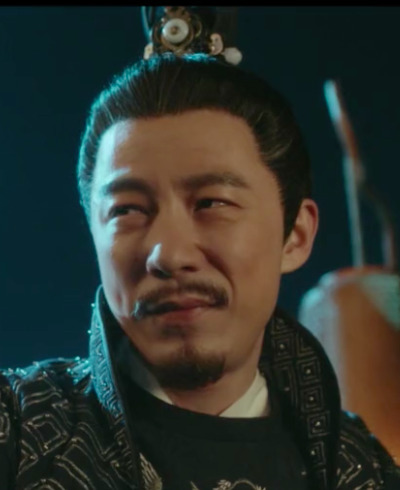
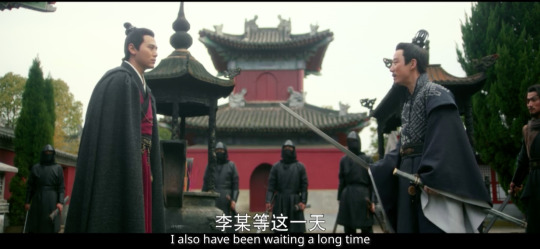
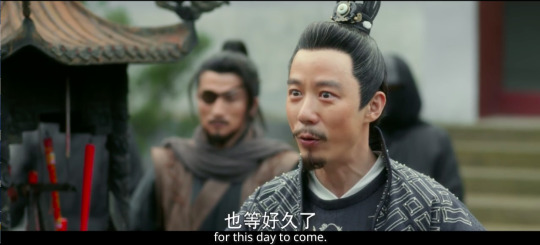
Powers & Omens
Li Zilong exhibits traditional powers of fox spirits.
Invisibility. When Wang Zhi and he are walking out of the brothel, he tells Wang Zhi to look away. Wang Zhi looks away for a few seconds, turns back, and Li Zilong is gone. There’s no hint that he leaped away; he seemed to disappear out of thin air. Or, perhaps, he simply turned invisible. He pulls a similar trick when Tang Fan sees him across the street, but he disappears after a carriage goes by. Naturally, he probably hopped on the carriage. But….what if he didn’t. Additionally, how did Li Zilong get into the brothel when he was holding the meeting with the Oirats? Why was he so unafraid to be in public when he was literally public enemy number one? Only someone who could disappear quickly could have such confidence.
Precognition/knowledge. Li Zilong knew everything about everyone, even when it didn’t make sense for him to know these things. How did he know so much about the chicken cup? How could he predict the moves of the heroes again and again and again? How did he know the history of individuals so well? Sure, he had men that kept him informed. He had Qing Ge. But his ability to not only know so many past and current events, and keep a thumb on so many individuals and schemes (like the Yunhe silver situation) for years is very, very impressive. Almost inhumanly impressive.
Fire. Now, Li Zilong himself does not have the power of fire, but he sure is attracted to it. Ding Rong describes the explosions of the bolang as a sea of fire - and wouldn’t that appeal to a fox who can strike fire with his tail? Imagine being able to amplify this natural ability. Li Zilong seemed to grow particularly protective and fond of the bolangs; his eyes would light up, he asked for far more than he ever needed. A fox with a penchant for fire indeed.
Wealth & Rebellion. Li Zilong fits the archetype of the fox being both a benefactor and an ill omen. He says time and time again that he’s a businessman, and indeed he is: he fills the pockets of men (and himself) with gold, so long as they follow him. Sounds almost like worship? And wouldn’t an old fox king just love that? Additionally, Li Zilong is considered a rascal, an outsider, a rebel; Shang Ming, Wan An, and Wan Tong will collude with him, but they still deem him an “other”, an outside force. Fox spirits were typically seen as the other, as a sign of chaos.
Miscellaneous
Here’s some additional details I picked up while rewatching that lend some credence to my fox theory.
Fox Rings. On one of his hands, Li Zilong wears orange and black rings, side by side. These colors are typically associated with foxes.
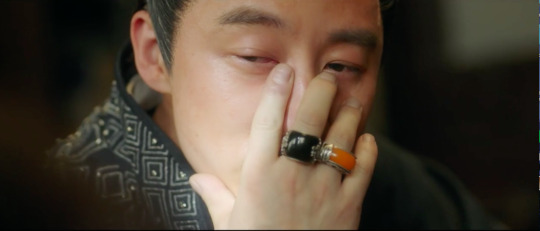
2. Actual fox reference. In episode 47, Li Zilong warns Qing Ge that you cannot run from the eyes of the “three old foxes.” These mean the corrupt officials, of course. But what’s even more curious is what Dong’er tells the emperor: don’t run from Li Zilong, because he will always find you. So who is really the old fox here?
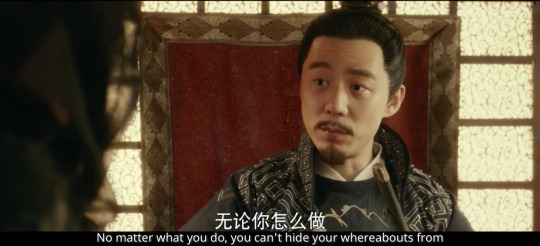


3. Qing Ge. One of the most common tales of fox spirits is them taking on the form of beautiful women to enchant men. Li Zilong adopting a skilled courtesan who canonically has men falling at her feet? Could this old fox king see a potential fox spirit in this adoptive daughter?
4. Tang Fan. In the Encyclopedia of Demons in World Religions and Cultures, the author states that “huli jing are especially fond of attacking virtuous scholars, as reasonable and virtuous people enrage them.” Li Zilong focused on Tang Fan as his real enemy. Not Sui Zhou. Not Wang Zhi. And why, when all three would eventually lead to his downfall? Because I think Tang Fan was the exact kind of scholar who Li Zilong couldn’t outsmart and beat, and he hated it.
5. Eyes. When Li Zilong falls down and dies, his eyes briefly change color. They flash from grey to silver; in the next scene, they’re brown again. What happened here? What spirit has left him? Could it be the death of a very old fox?

Conclusion
Fox or human? Descendant or royalty? Who knows what a Li Zilong is, but I think we can certainly assume he isn’t human - and may be the trickster from old. Ultimately, this is just my headcanon. At the end of the day, he may just be an old man who wanted to cause havoc for the hell of it. But I think this is a fun theory to entertain, and it gives him far more depth and intrigue than canon gave him otherwise.
Again, I am no expert in Chinese lore or Chinese fox spirits. Any mistakes are mine, and I’m certainly open to corrections!
#the sleuth of ming dynasty#tsomd#li zilong#huli jing li zilong#if anyone reads this kudos to you LOL#i figured if i was gonna write more of this au i should explain some of my thought processes#hastily written and not well edited bc whatever#lmao#mine
30 notes
·
View notes
Text
The mystery of the Wanggongchang Explosion
Ancient Chinese figures regard a small gunpowder explosion.
In the spring of 1626, during the reign of the Tianqi Emperor — the last ruler of the Ming dynasty — a catastrophic explosion devastated Beijing. As many as 20,000 people were reportedly killed, and entire square miles of the city were completely obliterated. Yet despite the large scale of destruction, and the generally meticulous recordkeeping of the imperial court, the cause and nature of the explosion are still subject to fevered speculation. Some even suggest that it never actually occurred at all.
The earliest account of the event appears in an official gazette (dibao) from the summer of 1626, reprinted later under the title “Official Report on a Heavenly Incident” (see Feng 2020):
When the sky was bright and clear, there was a sound like a roar from the northeast to the southwest corner of the capital, and the ashes rose and the houses were uprooted. In a moment there was a great earthquake, and the sky and the earth collapsed, and it was dark as night. From Shunchengmen in the east to Jinbu in the north, three to four miles in length, the surrounding area was destroyed, affecting tens of thousands of homes and people. The area around Wang Gong’s factory is completely devastated, with pieces of corpses everywhere, a suffocating smell filling the air, and rubble falling from the sky, confusing the vision. It is difficult to describe this heartbreaking sight. The roar of the explosion was heard from Hexiwu in the south, in Tongzhou in the east, in Miyun, and Changping in the north.1
Feng (2020, p. 74) notes two ways that this report differs from “conventional” gazettes:
The first is that it includes no reference to imperial edicts or court memorials; instead, it features copious entries describing how people, including the emperor and officials, suffered from the catastrophic explosion. Second, the text delineates an extensive array of abnormal and uncanny scenes that occurred in multiple locations across Beijing, conveying an atmosphere of panic in the capital. These elaborate narratives of “strangeness” stand in sharp contrast to the typically terse accounts of disasters in other gazettes.
Setting aside these reports, the simplest explanation for the explosion is not so strange at all: an accidental ignition of stores at the Imperial Gunpowder Workshop (Wanggongchang). Indeed, the Wanggongchang Armory, which produced nearly two tons of gunpowder per week2, was located near the epicenter of the blast. Yet while this account might seem to accord with the principle of Occam’s Razor, some argue that the details don’t add up. In particular, analysis suggests that the destruction described in contemporary records would have required explosive force equivalent to 20,000 tons of TNT, orders of magnitude more than even the largest plausible stockpiles of black powder could produce.3 Others contend that specific elements of the official narrative (a “roaring rumble” from the northeast, a bright streak of light, mushroom-shaped clouds) are inconsistent with a gunpowder explosion.
Alternative explanations abound. A 1986 conference in Beijing
explored all the possible causes of the incident from a spontaneous explosion of black powder to a natural gas leak, and the more far-fetched theories of meteorites, hidden volcanoes, and an underground nuclear discharge. The conference participants ultimately concluded that an earthquake resulted in a release of gasses at the site which ignited a massive explosion and firestorm which destroyed the area.
Other more “outlandish” theories, Jeremiah Jenne notes, “have implicated supernatural forces and even an interplanetary nuclear strike on Beijing.”
The reality may be far more mundane than any of the above. Feng (2020) argues that historical accounts of the explosion immediately sought to “politicize” it. In fact, the Tianqi Emperor was not a popular figure. He was, as Jenne recounts, “an odd young man, more comfortable in a carpenter’s shop than reading documents. […] Power devolved to his mother and the eunuchs, in particular, the infamous Wei Zhongxian, one of the most corrupt officials in Chinese history.” Along these lines, Feng suggests that “the ‘Official Report’ emphasizes the strangeness of the explosion in a manner that subtly aims to provoke the audience’s suspicion of the eunuch faction.” Perhaps the real story, then, is one of exaggeration for political effect — an industrial explosion embellished and distorted to tar a distrusted group.
2 notes
·
View notes
Photo
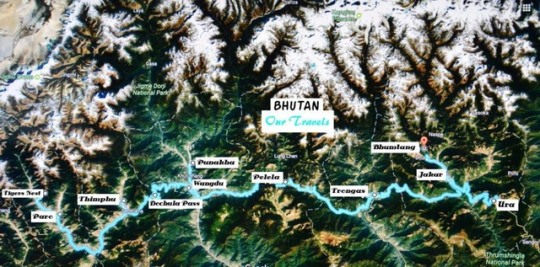

Family & Friends,
Ku~zoo zang~po La (greetings in Dzongha, Bhutan’s official language) & Namaste (greetings in Nepali)
Six of us, three Andres accompanied by a couple of bolt-on and a friend, are going on an excursion with a tour group to the mountain Kingdom of Bhutan (Land of the Thunder Dragon) and the former mountain Kingdom of Nepal (Roof of the World). These two landlocked countries, sandwiched between India on the south and Tibet on the north, abut the snow-covered Himalayan (abode of the snow) mountain range along their northern border.
Our excursion will combine trekking in the foothills of the Himalayas, and visits to historic, cultural, and religious sites in Buddhist-centric Bhutan and Hindu-centric Nepal.
Our travels and trekking in Bhutan, expected to be at elevations ranging from about 7,000 to 11,000-plus feet above sea level, should test the high-altitude endurance of those in our tour group who have already attained or are at near attainment of senior-citizen standing.
Compared with Bhutan, Nepal should be a piece of cake, as our travels and trekking in and around the bowl-shaped Kathmandu Valley, even though in the shadow of Mt. Everest, will be at much lower elevations ranging from 4,600 to 7,300 feet.
From the comforts of your home, without undue physical exertion, you too can partake in our excursion, albeit virtually, by following our blog which we will update from time-to-time depending upon availability of suitable internet connection.
Suzanne & Mehdi
September 2018
**********************************************
Some interesting facts about Bhutan (the only surviving Tibetan-Buddhist Himalayan Mountain Kingdom), other former Tibetan-Buddhist Kingdoms of the Region and Nepal
All the historic Tibetan-Buddhist Himalayan mountain kingdoms, with the exception of Bhutan, no longer survive as independent nations.
In recent history, three Tibetan-Buddhist kingdoms, all landlocked, ceased to exist: Sikkim, sandwiched between Nepal & Bhutan and formerly administered by colonial Britain, in 1975, with a population of 200,000, voted to join India in a referendum -- rigged by India, which then had it under military occupation, and swayed by the votes from the massive influx of Nepali-speaking Hindu immigrants -- with a banana republic-type of landslide election outcome of 97.6 percent approval; Ladakh become part of post-independence India in 1949 and was incorporated in the Indian state of Jammu and Kashmir whose border disputes have occasionally led to militarily skirmishes with Pakistan; and Tibet, forcefully gobbled up in 1950 by China after centuries as an independent nation, suffers from the Chinese government’s pogrom to systematically cleanse Tibet of its cultural, religion and heritage, coupled with a calculated endeavor by the Chinese government to change the demographics of Tibet by promoting the massive influx of Han Chinese.
Bhutan, after years of warring fiefdoms was unified in the seventeenth-century as a nation-state by a Buddhist lama, and became a hereditary monarchy in 1907 followed by a constitutional monarchy in 2008. In 2013, Bhutan held its second general election, in which the opposition People’s Democratic Party gained a majority of the seats in the National Assembly, paving the way for the country’s first democratic transfer of power.
Nepal, which had alternated between absolute and constitutional monarchy, became a federal republic in 2008, ending 240 years of royal rule. In 2006, Nepal’s 10-year insurgency led by Maoist rebels ended, and though generally peaceful now, the last 30 years of political instability, epitomized by a revolving door of governments under 25 prime ministers, continues.
The emergence of two major political parties in Nepal, a left- and a right-leaning party, in the December 2017 relatively-free-from-violence election in which 88 parties contested, could be the harbinger to the formation of a stable two-party system. In a resounding win, in what is believed to be a free-and-fair election, an alliance of two, now-reformed communist parties won control of the national government and six of the seven provincial governments.
Bhutan has enshrined in its constitution Drukpa Kagyu and Nyingma, both disciplines of Tibetan Buddhism which is a branch of the Vajrayana (or Tantric) School of Buddhism, as the state religions. However, Bhutan’s constitution allows for the right to freedom of thought, conscience and religion.
Nepal, at one time the only constitutionally-declared Hindu state (Hindu Kingdom of Nepal) in the world, became a secular state with the adoption of its 2008 interim constitution (subsequently secularism was enshrined in its 2015 new constitution), though there are on-going efforts and occasional violent incidences instigated by the fanatic Hindu Nationalist Party with a royalist bent wanting to restore Nepal as a Hindu State.
Bhutan is the only country that uses Gross National Happiness (GNH) instead of Gross Domestic Product (GDP) as its development indicator. GNH is a development philosophy and a measure of the collective happiness of the nation. Bhutan’s constitution enshrines the state’s obligation to promote those conditions that it believes enable its citizens the utopian pursuit of happiness.
Bhutan has also enshrined in its constitution the state’s obligation to prevent certain environmental degradations, has committed to retain at least 60% of its landmass forested in perpetuity, and has pledged to become carbon negative (as opposed to carbon neutral) long before 196 countries signed the Paris Climate Accord on limiting carbon emissions.
(Subsequent to President Obama signing this Accord, President Trump, based on his customary penchant to disregard truths, withdrew the U.S. from the Accord after having branded climate change a hoax propagated by the Chinese. Alas, many of Trump’s so-called deplorable supporters fervently believe in this Trump-centric nonsensical alternative truth, and their messianic thirst for alternative truths is satiated by the over 4,000 three, four and five Pinocchio-laden lies (according to the Washington Post scorekeeping) Trump has publicly communicated in less than 2 years after what he seems to believe was his coronation.
Bhutan & Nepal frequently have no choice but to be subservient to India, their giant neighbor to the south, as these two landlocked countries’ economies are inevitably dependent on and tied very closely with that of India.
India, which sees Bhutan as a geopolitical buffer against China, allocates about three-fourths of its foreign aid to Bhutan (amounting to about 30% of Bhutan’s GDP and about 50% of Bhutanese government’s revenues), and wields considerable influence over Bhutan's commerce, and foreign and defense policies.
Apparently Bhutan has outsourced a meaningful portion of its source of wealth (GDP) by trading off some of its sovereignty, but in the process has dumped onto India some of the incidental injurious byproducts of wealth generation that have an inevitable adverse impact on happiness (a drag on GNH). Further, this landlocked country of about 800,000 people has not much choice but to cast its lot with India, knowing that China has designs over some of Bhutan’s territory and also knowing of China’s continued persecution of their brethren in Tibet since its occupation in 1950 by China.
The biggest export of Nepal (30 million population) is its people. Thirty percent of Nepal’s GDP is derived from remittances by the approximately 12 million Nepalis working mostly in India, and to a lesser degree in the Middle East and elsewhere.
In 2015 India had blocked fuel shipments to Nepal because of its displeasure with certain provisions of Nepal’s 2015 constitution, though India had denied such attempt to blackmail Nepal. India and Nepal seem to have worked out their differences after Nepal passed an amendment to its constitution.
A railroad through the Himalayan mountain range connecting Tibet (China) and Nepal, being built and financed by China under its “belt and road” initiative, is expected to reduce Nepal’s dependence on India. This is also an attempt by Nepal to play one regional power against the other, while China views it as an opportunity to expand its dominance in the region.
The 2017 average life expediency of the Bhutanese was 69.8 years, virtually the same (69.2 years) as that of the Nepalis, their neighbors, though with the government-championed National Happiness in their corner, I suspect the Bhutanese die much happier than the Nepalis.
In 2004, Bhutan became the first country to become tobacco-free. It is illegal to sell tobacco, or smoke in public places or even in private offices.
In 2007, with the Nepali Supreme Court ruling in favor of LGBTI (lesbian, gay, bisexual, transgender and intersex) rights, Nepal became the first country to recognize a third gender, intersex – those having neither male nor female traits. (Germany is the second country to recognize intersex rights with its top court’s ruling in 2017.) Subsequently, Nepal enshrined those rights in its constitution and became the most progressive country in South Asia for the protection of LGBTI rights.
People with intersex traits (also referred to as eunuchs) do not have typical male-female sex characteristics. Some intersex traits are visibly evident such as ambiguous genitalia, while other may involve chromosome variations. According to the United Nations, up to about 1.7% of the global population is born with intersex traits.
According to Transparency International’s 2016 Corruption Perceptions Index ranking of 176 countries, 27th-ranked Bhutan (a remarkably high standing for a third-world country), is relatively corruption-free compared with 131st-ranked Nepal which has slipped many notches in recent years. Bhutan is ranked one notch ahead of Israel and behind 18th-ranked U.S. (Denmark & New Zealand are tied for first place, Canada is ranked 9th, and in the last place is that almost-perpetually ungovernable, war-torn Somalia.)
1 note
·
View note